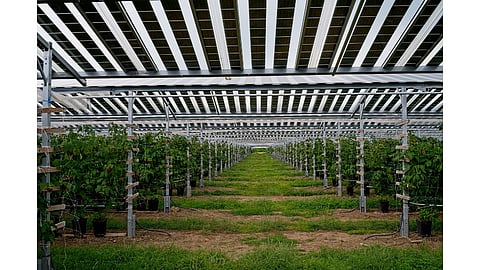

Czechia has introduced a decree to promote the development of agrivoltaics
It allows for solar panels to be placed horizontally or vertically on agricultural land
Such structures will be allowed in vineyards, hopyards, orchards, nurseries, containers, and truffle areas
The Czechian government has published a decree paving the way for the dual use of agricultural land with the installation of solar power systems. These agrivoltaic structures will thrive in vineyards, hopyards, orchards, nurseries, containers, and truffle areas with the new legislation.
The country’s Ministry of the Environment and the Ministry of Agriculture agreed and published the decree 425/2024 Sb on December 17, 2024. It came into effect on January 1, 2025.
It allows for solar modules to be placed 210 cm above the agricultural land surface in a horizontal arrangement so as not to obstruct agricultural activities, keeping a minimum of 95% of the area usable for agriculture.
For vertical installations, the panels must be placed in one or more rows and the agriculturally usable area must represent at least 80% of the total area of such a solar power project.
Czechia targets to reduce its GHG emissions by 55% by 2030 with the help of renewables, flexibility, energy savings and reducing the share of fossil fuels. By 2033, it aims to completely end coal mining and combustion. This will require a ‘fivefold’ increase in energy from solar PV and wind power plants, according to the country’s Environment Minister Petr Hladík.
According to SolarPower Europe’s EU Market Outlook for Solar Power 2024-2028, the Czechian solar PV market grew by around 1 GW in 2024 as it builds larger, but fewer solar power plants as interest in residential PV declines.
Among the market’s other challenges is the government threat of retroactively cutting feed-in-tariffs (FIT) granted to 2 GW of existing solar PV projects built between 2009 and 2010. The local association is also pushing for flexibility and storage to be included in the law to ease grid congestion, ease negative energy prices and also promote solar energy deployment.
